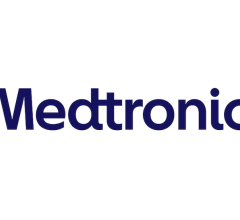
October 26, 2012 — Covidien announced final 12-month results from its DEFINITIVE LE (Determination of Effectiveness of SilverHawk/TurboHawk Peripheral Plaque Excision Systems for the Treatment of Infrainguinal Vessels/Lower Extremities) study.
DEFINITIVE LE is the largest peripheral atherectomy study conducted to date with independent physician review of the outcomes. The study, which enrolled 800 patients at 47 centers in the United States and Europe, demonstrated the long-term effectiveness of directional atherectomy as a frontline therapy for the treatment of peripheral arterial disease (PAD). Directional atherectomy is a minimally invasive treatment that removes plaque from the body and restores blood flow in the native artery.
“For the first time, the DEFINITIVE LE study has provided robust evidence within a large and diverse PAD patient population,” said Lawrence A. Garcia, M.D., chief of interventional cardiology and vascular interventions at St. Elizabeth's Medical Center in Boston. “Directional atherectomy, with the SilverHawk and TurboHawk devices, delivers patency results at 12 months post-treatment that are comparable to those reported in stent studies — and with the important advantage of not leaving anything behind in the vessel.”
DEFINITIVE LE 12-Month Efficacy and Safety Results
Clinical outcomes were improved by 30 days and sustained through 12 months of follow-up. Directional atherectomy with the SilverHawk and TurboHawk devices delivered 12-month patency results that were comparable to those reported in stent studies.
Among patients with claudication, primary patency (i.e., the treated artery remained open) was 78 percent using a peak systolic velocity ratio (PSVR) < 2.4 at 12 months. Notably, this rate did not differ between patients with diabetes (77 percent) and those without diabetes (78 percent) — the first such results to be shown in a prospective, powered analysis. Among patients with critical limb ischemia (CLI — a severe form of PAD), 95 percent were able to avoid a major unplanned amputation of the target limb. The SilverHawk and TurboHawk devices were shown to have a strong safety profile in the study, with low complication rates.
According to the American Heart Association, approximately 10 million people in the United States are affected by PAD, which is one of the most common vascular diseases and can lead to heart attack, stroke, amputation and death. It occurs when arteries in the legs become narrowed or blocked by plaque; these blockages can result in severe pain for patients, limited physical mobility and non-healing leg ulcers.
"DEFINITIVE LE confirmed equivalent outcomes between diabetics and non-diabetics in terms of patency and persistent clinical improvement up to 12 months after treatment,” said Professor Thomas Zeller, M.D., head of the department of angiology at Universitäts-Herzzentrum Freiburg-Bad Kronzingen, Bad Krozingen, Germany. “Because diabetics have more advanced PAD, restenose faster and are more difficult to treat than non-diabetics, it is critical to preserve future treatment options in this patient population. The confirmation from DEFINITIVE LE of directional atherectomy as a treatment modality that provides strong clinical outcomes in diabetics is a welcome and practice-changing finding.”
Garcia and Zeller, together with James McKinsey, chief of the division of vascular surgery and endovascular interventions at New York-Presbyterian Hospital/Columbia University Medical Center, served as co-principal investigators for the DEFINITIVE LE study.
DEFINITIVE LE Study Design
The prospective, multi-center study comprised two cohorts — those with claudication and those with CLI. A total of 1,022 lesions (up to 20 cm in length) were treated with the Covidien SilverHawk or TurboHawk Plaque Excision device. The study included a broad patient population, with 52 percent diabetic, 45 percent female and 75 percent claudicants, and a pre-specified sub-analysis comparing patency outcomes in diabetic and nondiabetic patients.
Several controls were included to ensure rigor in the study. These included Steering Committee oversight, adverse event adjudication by an independent physician Clinical Events Committee and endpoint analyses conducted by two different independent core laboratories — one that analyzed acute angiographic results and another that analyzed duplex ultrasound follow-up.
Final results from the landmark study were presented today during the Late-Breaking Clinical Trials session at the Vascular InterVentional Advances (VIVA) Conference here.
For more information: www.covidien.com


 November 08, 2024
November 08, 2024 








